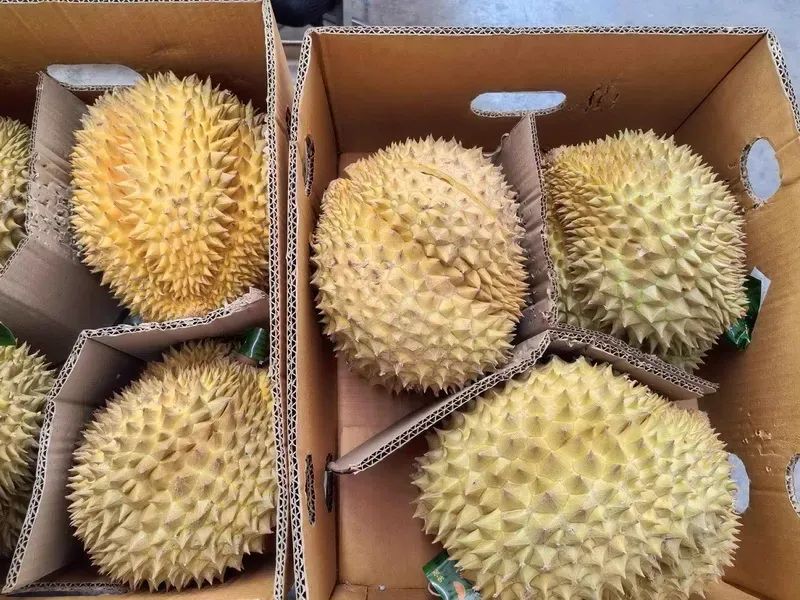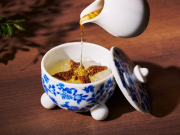(SINGAPORE 10.6.2025)Due to the influx of Chinese into the enterprise of durian-growing in pursuit of the fruit’s high profit, this once-pricy delicacy of Southeast Asia which used to be endemic to the region has now become more widely grown and therefore over-supplied and cheaper, driving a trend that some durian experts find worrying where South-east Asian retailers might be forced out of the market.
“Southeast Asia and southern China are currently in the midst of a durian ‘land grab’ where Chinese businessmen seize hold of lands to grow durians coveting the high returns.

In the past decade, Thailand’s durian planting area has grown by 38%, and Malaysia aims to increase its output to 500,000 tons by 2025. Meanwhile, China’s Hainan province plans to become a 100,000-acre durian base by 2026,” noted Agroworld, a digital platform that features durian events and information, in a recent post.
“Also, advancements in agricultural technology have increased durian yield per acre by 20% to 30% while grafting techniques have shortened the fruit-bearing cycle to 4 to 5 years. At this pace, global durian production could exceed 6.5 million tons by 2030, double that of 2022. This exponential growth, coupled with a finite consumer market, foreshadows market saturation,” it continued.
Over the last 20 years, China imported more and more durians, the countries of origin being Thailand, Malaysia, the Philippines, and Vietnam. According to China’s General Administration of Customs, China imported 1.4 million tons of durians in 2023, with value reaching US$6.7 billion and the volume double that in 2019. In 2023 alone, Chinese consumers ate 570 million durians. Thailand is the largest supplier, accounting for about 80% of China’s market share.
But since the end of March, durian prices in China have continuously plummeted. Thailand’s popular “Golden Pillow” variety experienced a decline of nearly 40% over that period. In May wholesale durian prices were brutally halved in China, dropping from 45 yuan (about $9) per jin (roughly two kilograms) to around 25 yuan. As of June 1, the lowest wholesale price for Golden Pillow in Beijing was 21.5 yuan per jin.
According to the Chinese media, what drove the downward trend was increased supply of Thai durians. This fall coincided with the recent uncovering of an illegal land-grabbing case in Thailand involving Chinese investors, where a piece of forest land equivalent to 222 football fields in size is used for large-scale durian cultivation.
The investigation found that although the land is nominally purchased by a Thai company, the real buyers behind it are Chinese investors. Bangkok has instructed the regional office to file legal proceedings against the company involved and reclassify the reclaimed land as community forest to restore its ecological functions, Thailand’s Bangkok Post reported.
There are also reports on Chinese durian growers and investors cultivating durians in Vietnam, especially in the southern and central highlands regions. They succeeded in obtaining the lands by financing local farmers, entering into contract farming agreements, or through leasing or co-managing them.
Chinese durian growers also ventured into Malaysia, whose Musang King variety is immensely liked by Chinese consumers. There, besides cultivation, Chinese technology also makes its mark. For instance, AI is used to enhance the efficiency and yield of durian plantations. Chinese enterprises also provide scan technologies to help optimize the durian sorting process.
Meanwhile, in Laos, concerns have emerged recently regarding environmental impact of Chinese-invested large-scale durian plantations, particularly in Attapeu province where a Chinese company has secured a 5,000-hectare lease, equivalent to about 3,800 football fields in area, to create what could become the world’s largest durian farm.
The growing surplus of durians is compounded by the growth of Hainan’s durian industry, where about one-fifth of the approximately 3,333 hectares cultivated has now entered the fruit-bearing stage. The Hainan durians are grown using the so-called “ripe on tree” technique, which ensures that the fruit is only harvested when it has reached its optimal flavor. Hainan durians are projected to replace 15% of China’s durian import this year.
Currently, durian sale still maintains on average a profit margin of 40% to 60% in China, far above other agricultural products, Agroworld pointed out. But signs of price pressure have started to emerge in 2023, with Thailand’s durians experiencing a fall of 18% year- over-year and Vietnamese durians by 30%.
Once the wholesale price of durian dips below 25 yuan per kilogram, small and mid-sized growers may be forced to exit the market of China. It would lead to further price drops and supply contraction, which would happen dramatically between 2027 and 2030, Agroworld predicted.
However, market saturation does not signal a dead end, projected Agroworld, adding that it only marks the beginning of structural adjustment. Premium varieties and deep-processed products like freeze-dried durian and durian-based snacks will drive the next wave of growth, it claimed. By 2035, processed durian products would account for 25% of the Chinese market, up from the current 8%.
So, it seems the gravity of durian consumption would irreversibly move to China, remarked Agroworld. Indeed, according to a study by HSBC, China consumed 91% of the world’s durians in 2003 and the United Nations put it at 95%. But durian retailers across Southeast Asia could be affected in the long-term by the surfeit of durians, once a pricy fruit, if Chinese-grown durians spill into the region, just like what Chinese had done to the global market of electric vehicles, remarked Muzi, a Chinese influencer.





































